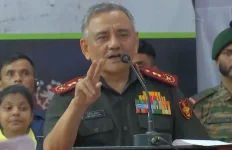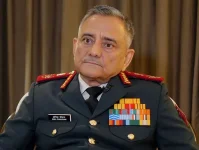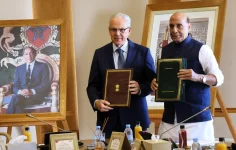India’s propose air defence system — Sudarshan Chakra — will entail a colossal amount of integration of sensors, missiles, surveillance apparatus and artificial intelligence tools, Chief of Defence Staff Gen Anil Chauhan said on Tuesday as he articulated the broad contours of the ambitious project.
The Chief of Defence Staff said the air defence system will work as “a shield and a sword’, and suggested it will be on the lines of Israel’s Iron Dome all-weather air defense system, known as a very effective missile shield.Gen Chauhan’s comments on the proposed missile shield at a defence conclave here are the first from the military after Prime Minister Narendra Modi announced the 10-year project during his Independence Day address.
In his address at the ‘Ran Samwad’ — a tri-services seminar on war and warfighting — Gen Chauhan also briefly delved into Operation Sindoor and said a number of lessons have been learnt from the conflict and they are being implemented.”Operation Sindoor was a modern conflict from which we learned a number of lessons, and most of them are under implementation, some have been implemented,” he noted The top military officer broadly elaborated on the possible structure of the Sudarshan Chakra, describing it as India’s own “Iron Dome or Golden Dome”.
“I think the aim is to develop a system to protect India’s strategic, civilian and nationally important sites, and it will act both as a shield as well as a sword,” the Chief of Defence Staff said.
“It will entail the development of robust infrastructure and processes for the detection, acquisition, and neutralisation of the enemy’s air vectors, including using both soft kills and hard kills, both kinetic and direct energy weapons.” Gen Chauhan said the missile shield will comprise various elements of intelligence, surveillance and reconnaissance (ISR) as well as various weapons systems.
“We’ll have to look at multi-domain ISR, integration of ground, air, maritime, undersea, space, sensors, all becoming a key necessity and integrating them,” he said.
“A colossal amount of integration will be required, as multiple fields will need to be networked to provide a very fused picture to us. Colossal amounts of data will be needed to be analysed for information in real-time response,” he added.
The Chief of Defence Staff said the missile shield project will also have applications of artificial intelligence, advanced computation, data analytics, big data and quantum technologies.
“For a vast country like India, a project of this magnitude will require a whole-of-nation approach. But like always, I am very sure Indians will do it at a minimal and very affordable cost,” he said.
PM Modi announced the Sudarshan Chakra project days after Pakistan Army Chief Field Marshal Asim Munir reportedly hinted at targeting Indian assets along the border, including Reliance Industries Ltd’s Jamnagar refinery in Gujarat, in case of any future military confrontation between the two countries.
The project is planned to be implemented by 2035.
In his remarks, Gen Chauhan also invoked Krishna and Arjuna, highlighting how they defeated the adversary in the battle of Kurukshetra.
Emphasising that battlefields of tomorrow will not recognise service boundaries, he called for swift and decisive joint responses across domains to ensure victory in future wars.
Describing Aatmanirbharta in defence and integrated logistics as key to emerge victorious in the wars to come, the top military official reaffirmed that ‘jointness’ is foundational to India’s transformation.
He underscored the need to institutionalise joint training and absorb constantly-evolving technologies such as artificial intelligence, cyber and quantum to enhance operational capability.
Gen Chauhan said that developing capabilities in multiple domains is central for attaining victory in future wars.
Citing Kautilya, he said India has been a fountainhead of ideas and knowledge since ancient times.
However, very little literature on scholarly analysis of Indian Wars or academic discourse on strategy exists.
“Serious research needs to be done on various dimensions of war, leadership, motivation, morale and technology. India needs to be Sashakt, Surakshit, Aatmanirbhar and Viksit. This can only be achieved when all stakeholders participate collectively in the process of building future ready forces,” he said.
The CDS pointed out that the idea of Ran Samwad is to create space for actual practitioners, especially young and middle level officers, who are aware of technological advancements.
He stated that there is a need to hear their point of view thus creating an ecosystem wherein symphony and harmony among new ideas co-exist with the experience provided by the personnel.
The two-day seminar brings serving military professionals to the forefront of strategic dialogue.
Defence Minister Rajnath Singh will deliver the plenary address on the second and final day. A few joint doctrines and the technology perspective and capability roadmap will also be released during the event.





